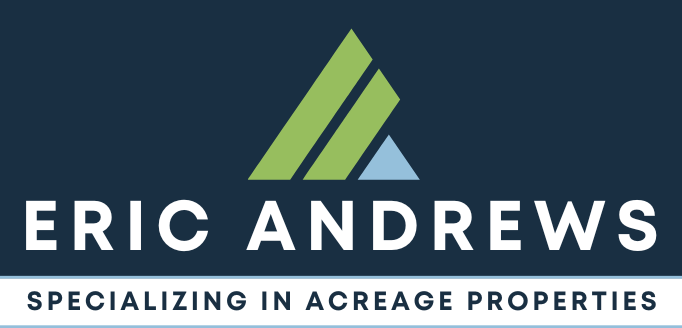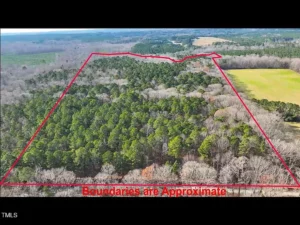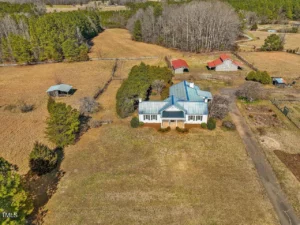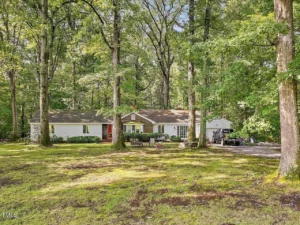In this video, Chatham County Real Estate Broker Eric Andrews explains the differences between manufactured homes, trailers, on-frame modulars, off-frame modulars, stick built homes, log homes and North Carolina Building Codes.
Speaker 1: What is the difference between a trailer and a manufactured house?
Speaker 2: So trailer and manufactured are basically the same thing. If it comes in on wheels, it’s probably a trailer. So manufactured housing, trailers, we have single wide, double wide, triple wide. These are homes that are made to Uncle Sam, Federal HUD specifications. They’re not built to North Carolina building code. They’re built to Federal HUD building code. And so these are homes that are built inside, never exposed to the elements, completely manufactured, and they have a metal frame. They have a VIN number. They have a HUD number and these are trailers. The wheels and the trailer hitch is taken off and they’re usually put underneath. And then we build a foundation around them.
Where it gets confusing is, then there’s something that’s called an on-frame modular. And what this means is, this is basically manufactured housing, but it is built to the North Carolina building code. So it’s a little bit higher standards, but it’s an on-frame modular, so it still has that metal frame, still comes in on wheels, still built inside ideal weather conditions, never exposed to the elements, but it’s built to the North Carolina building code. And so that’s considered a juiced up manufactured house. But a lot of lenders, because it’s on a metal frame, are still going to treat it like manufactured housing and probably won’t give a loan for it. And so those that’s what’s called an on-frame modular.
Then the next level up would be an off-frame modular. These are pieces of a home that are built inside and they are wheeled in, but then they’re all put together like pieces of a puzzle. And so that is an off-frame modular. So it’s really built like a stick-built home, depending on who the manufacturer of the modular home is. And those are pieced together. And most of those don’t get as much in the market as a stick-built home, but lenders are nice to modular homes.
Then the next level up, we have the log homes that are kits. A lot of lenders consider those modular homes, believe it or not, because they’re coming in pieces. The irony there is, a log home actually is more expensive to build than a stick-built home, but a lot of them still consider them modular homes because they come in pieces and are unloaded off a truck. Then there’s something called panelized homes, which is really confusing. Panelized homes is they prefabricate the roof, they prefabricate the walls, they prefabricate the floors, but they’re coming together, panels. So it’s not a modular home, but it’s again, not a stick built home.
Then you have the actual stick-built home, which is they’re coming in doing the foundation. They’re bringing in all the wood and they’re building your house there. It is a stick-built home. And we have stick-built homes that are done by track builders. So they’re building the same style of home over and over again. And then we have stick-built homes that are done by custom builders. You give them the plans and they build it for you. The major divisions are manufactured, modular and stick-built, but there are some areas that are getting blurred.
Speaker 1: So the manufactured is a trailer?
Speaker 2: Trailers are manufactured.
Speaker 1: Okay.
Speaker 2: Yep. Yep.
Speaker 1: And are modular manufactured?
Speaker 2: They are manufactured, but they’re not regarded as manufactured as a lender is concerned.
Speaker 1: So if the Zillow listing says it’s manufactured, it’s a trailer?
Speaker 2: It probably is.
Speaker 1: Okay.
Speaker 2: Yeah. Yep. Single-wide, double-wide and triple-wide.
